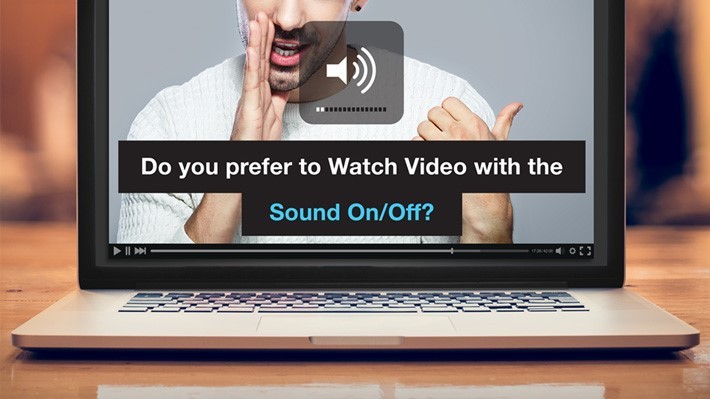Breaking the sound barrier for B2B video content
New research from LinkedIn shows that professional audiences are almost as likely to watch B2B video content on mobile devices as they are on desktops and laptops. And that puts B2B video that relies on sound at a significant disadvantage.
In our survey of LinkedIn members, 91% said that they watch video on their mobile devices, compared to 96% who do so on desktops or laptops. However, when we asked B2B audiences how likely they were to have their sound turned on when watching, a big difference emerged. Whereas 56% of those watching video on a laptop or desktop typically listen to it as well, only 37% of those watching on mobile do. In fact, 21% of mobile B2B video viewers have their sound permanently turned off.
Scroll down for the full video research findings in our Infographic – and then scroll down further to explore tactics for breaking B2B video content’s sound barrier.
With 57% of engagement on LinkedIn taking place on mobile devices, and B2B decision-makers consuming over seven times more content on mobile than the average professional, the preferences of mobile B2B audiences matter. Research from the Financial Times and Alpha Grid recently confirmed that senior B2B decision-makers are consuming more video content on trusted platforms like LinkedIn – often on mobile devices, and often outside of traditional business hours.
The importance of visual storytelling for mobile video
To be effective, B2B video content needs the ability to create impact and communicate value through visuals alone, within the first few seconds. With 29% of mobile video viewers saying that they watch with a mix of sound on and off, there’s an opportunity to persuade close to a third of your potential audience to turn the volume up. However, to do so, you first need to convince them that you have something to say worth listening to. Videos that play automatically in the LinkedIn feed, and pack intriguing visuals and a sense of story into their first few frames, are more likely to achieve this than a standard talking head approach. Integrating text and graphics into video content is another effective tactic for communicating its value and purpose without relying on sound.
Why subtitles are essential for B2B video content
Subtitles have an increasingly important role to play in branded video content, since they enable audiences to engage with video on their own terms, without fiddling with their sound settings. In our survey, 41% of professionals said they are more likely to watch video that includes subtitles – and only 11% said subtitles make them less likely to watch.
Finding the right role for video in your B2B content strategy
Tailoring video content to the preferences of a B2B audience isn’t just a case of balancing sound and visuals, though. Marketers also need to consider when video is the best vehicle for communicating their messages – and when it isn’t. Strikingly, 31% of the professionals in our survey said that they preferred text to video content when engaging with a corporate or brand blog. Video content may be a highly effective tactic for standing out and engaging attention in the LinkedIn feed, but when it comes to communicating in-depth information efficiently, the written word still has a big role to play.
Related articles



